Our Top Viral Surveillance Insights in Late October

While it continues to feel like “the pandemic is over,” we’re uncovering additional COVID and other respiratory disease insights as the fall season is in full swing. Our latest takeaways:
- Flu continues to rapidly increase, and history suggests COVID will follow. While COVID cases and positivity continue to trend downward in the US right now, our viral surveillance data over the past year has shown COVID positivity trends typically lag flu by just a couple weeks. Flu is up across virtually all age groups (and up substantially for those <18 years old). COVID positivity in the US is highest right now in individuals >45 years old, and cases continue to rise in Germany and France, causing our experts to continue to predict that COVID will rise in the US shortly.
Figure 1: COVID positivity has historically followed flu positivity
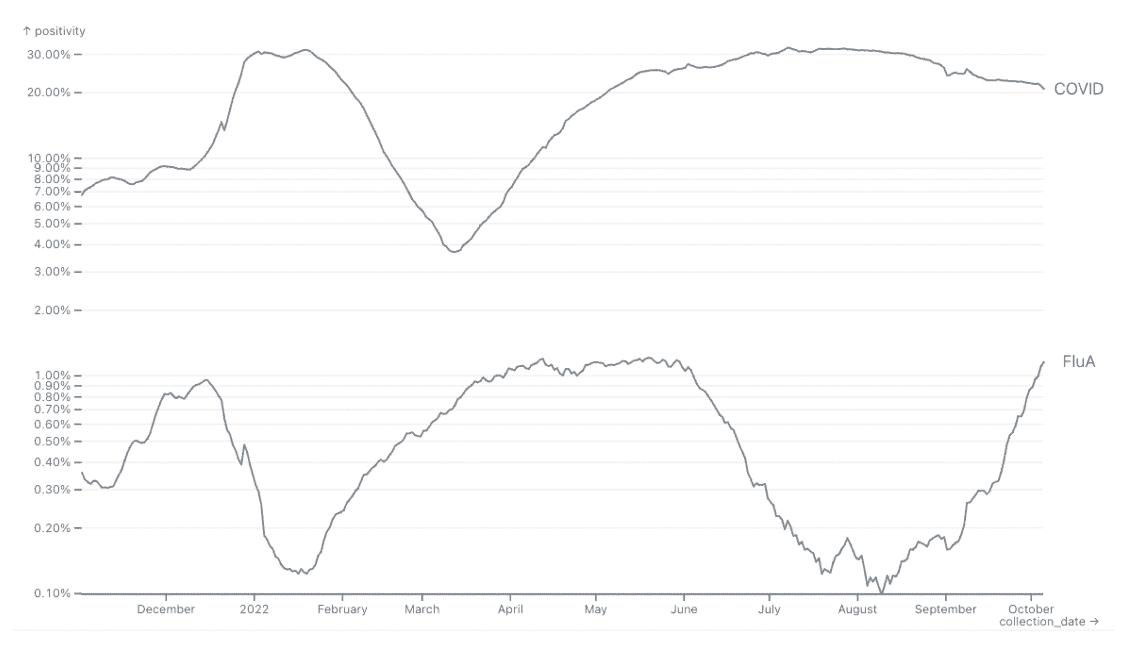
Figure 2: Flu positivity by age
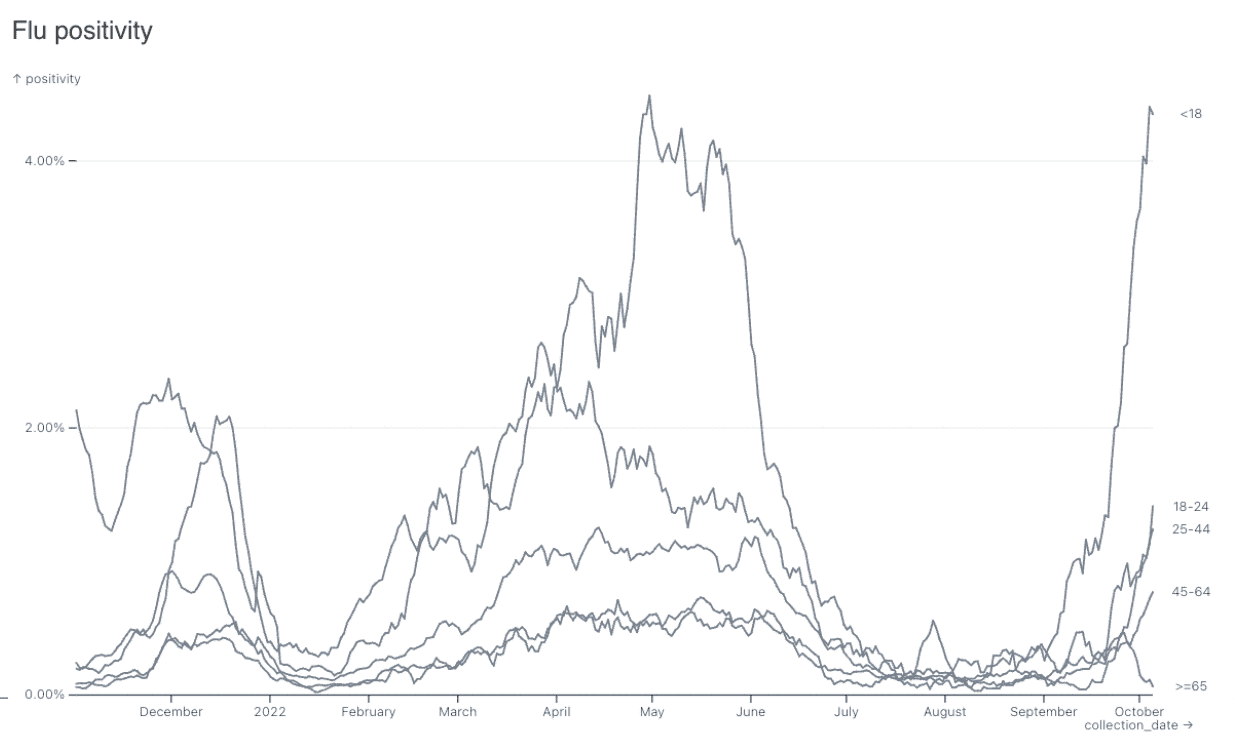
Figure 3: COVID positivity by age
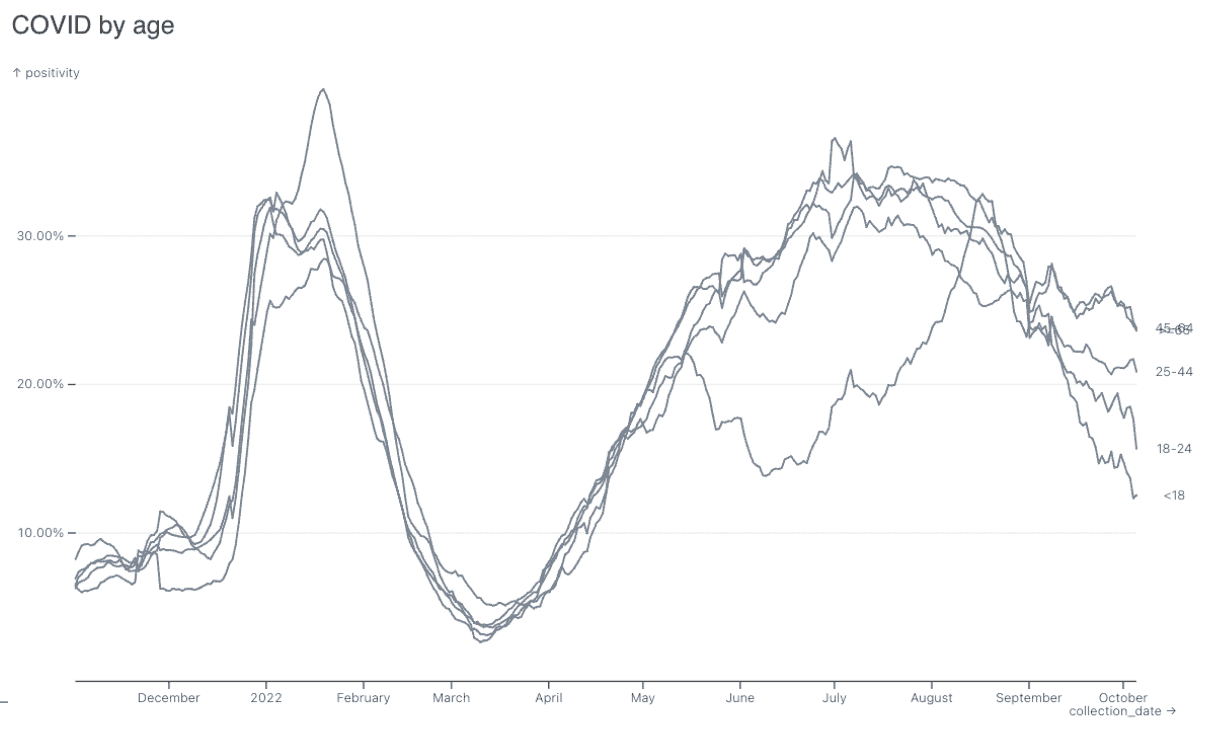
- Substantial variant diversity makes it likely rising cases won’t be from a single lineage: Now that a large majority of people have had COVID, there is a lot more pressure for SARS-CoV-2 to diversify, which explains the subvariant soup circulating right now. To know which ones to watch, we’ve shifted to focusing on which mutations are showing competitive advantages and growth (like R346T, N460K and K444T), and then tracking the lineages that have several of them. For example, BQ.1.1 has at least 8 of the mutations known for immune escape and is on our watchlist (along with BF.7 and BQ.1 – all rising slowly). With this diversity, it’s possible not just one lineage will take over like last winter, but several lineages with a specific mutation or combination of them will contribute to the expected winter uptick.
Figure 4: Spike mutations on the rise
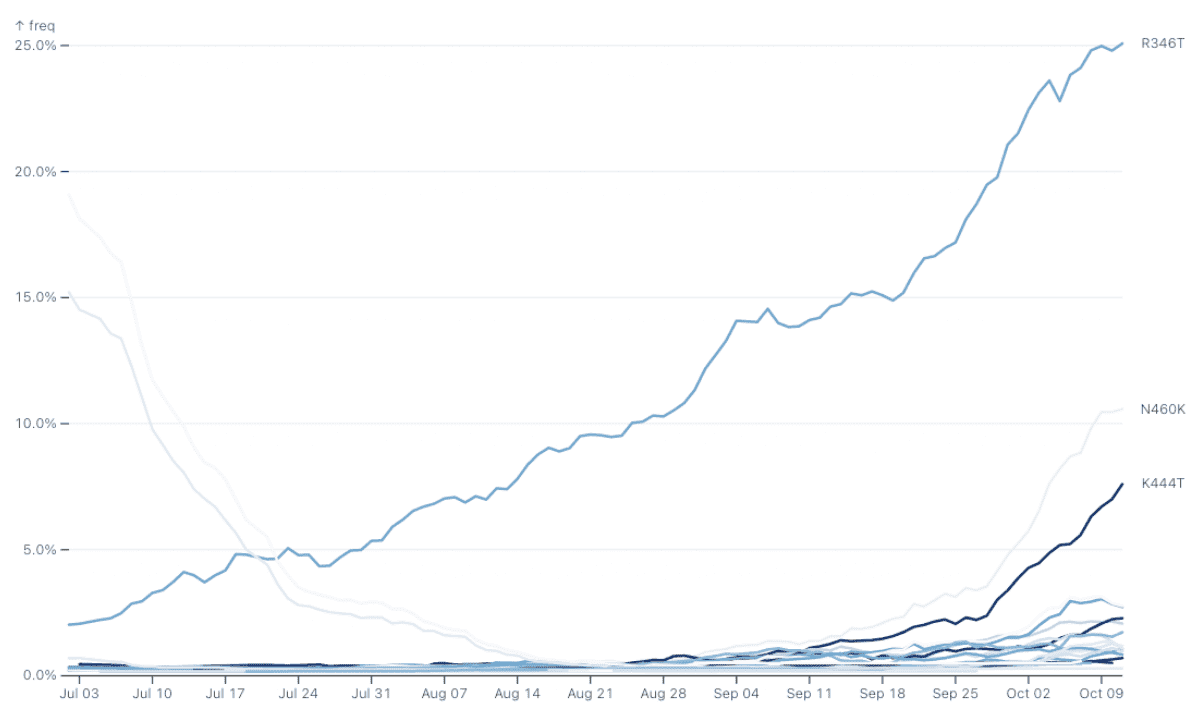
Figure 5: Lineages that have several competitive mutations are on our watchlist
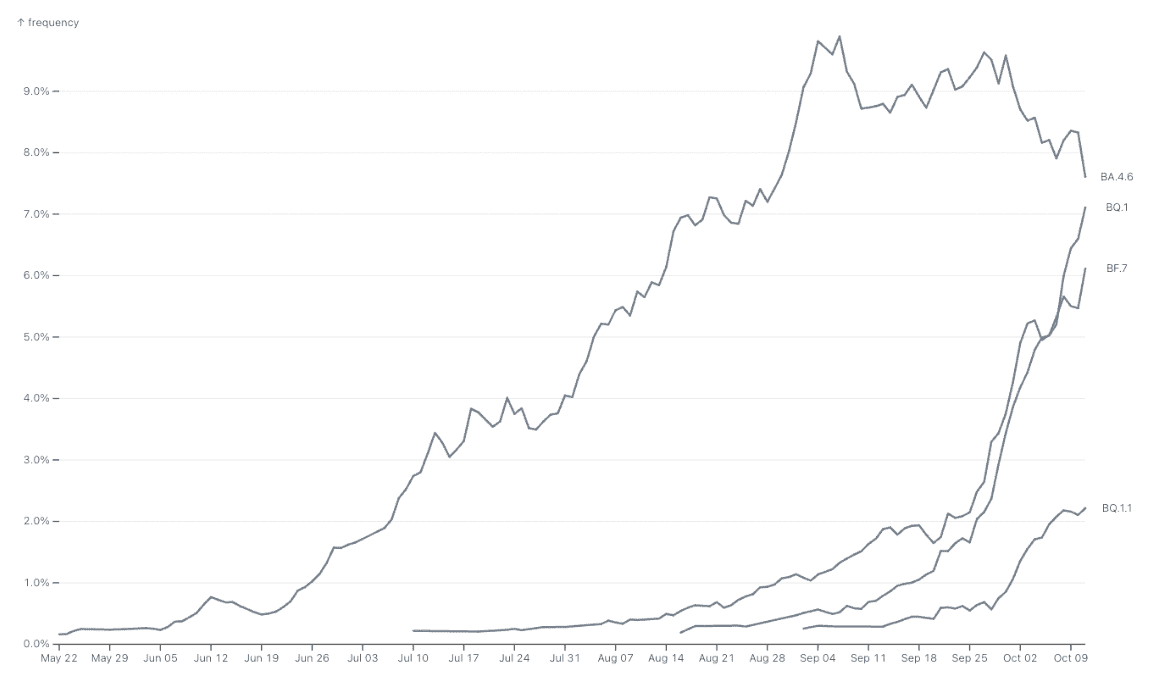

- Current treatments are still effective but clinicians are preparing for a drop in efficacy: Fortunately, there isn’t as large of a group of unaffected individuals to sweep through this year, and bivalent booster protection and antivirals continue to show effectiveness against severe disease and hospitalization. But as indicated by this recent NIH statement, providers are preparing for the possibility monoclonal antibodies may be much less effective against new variants, though no immediate changes have been made to guidance on these treatments.
Categories